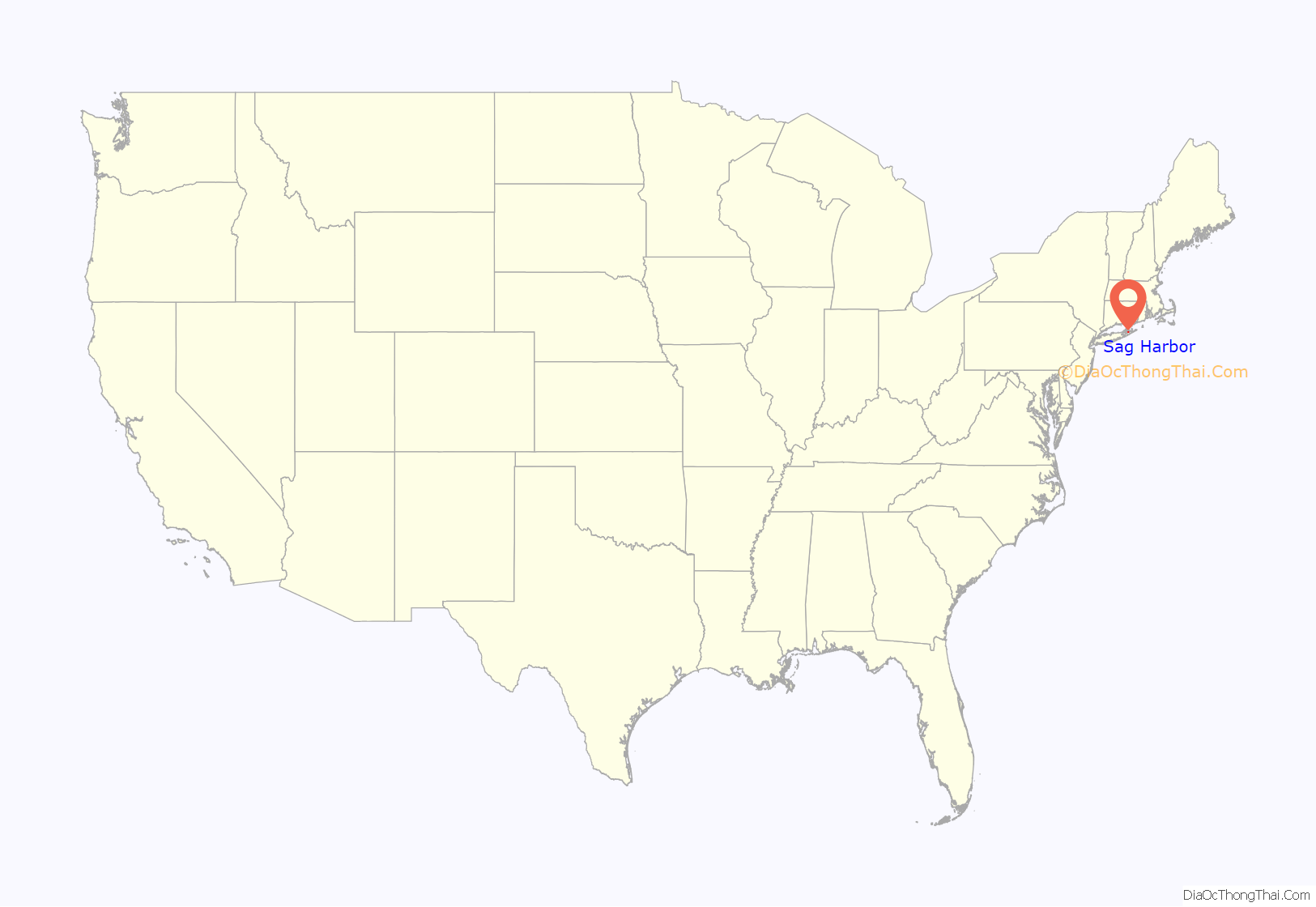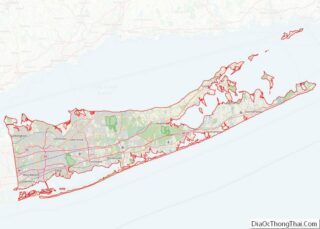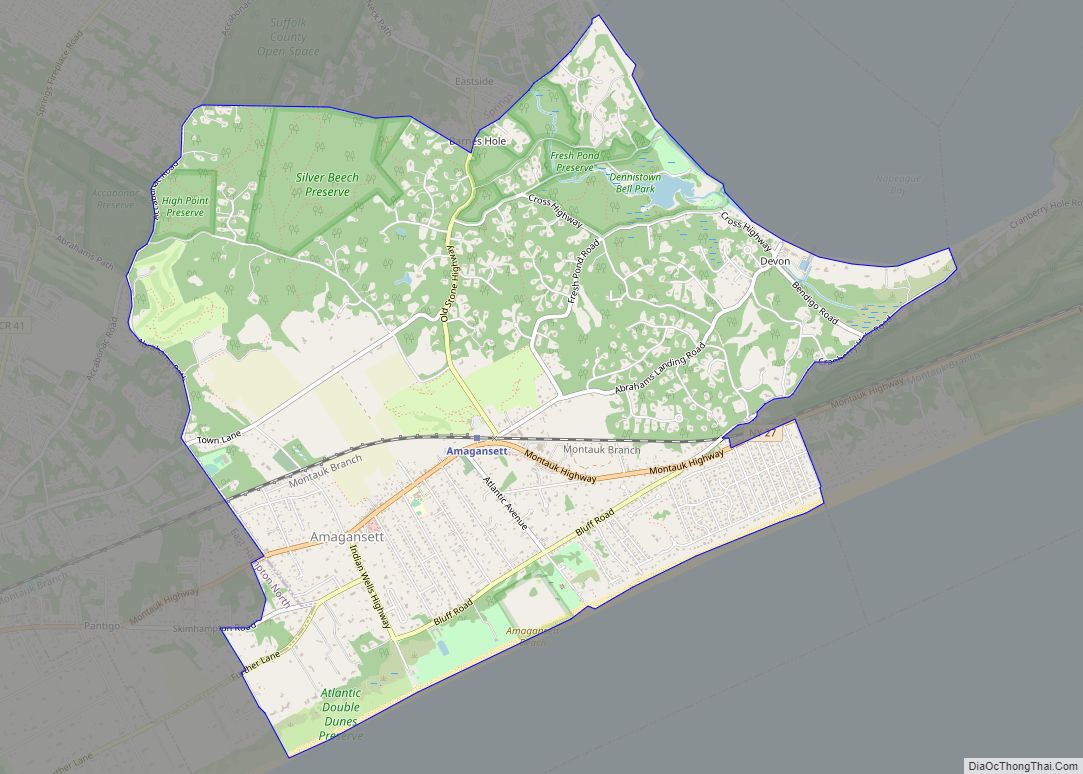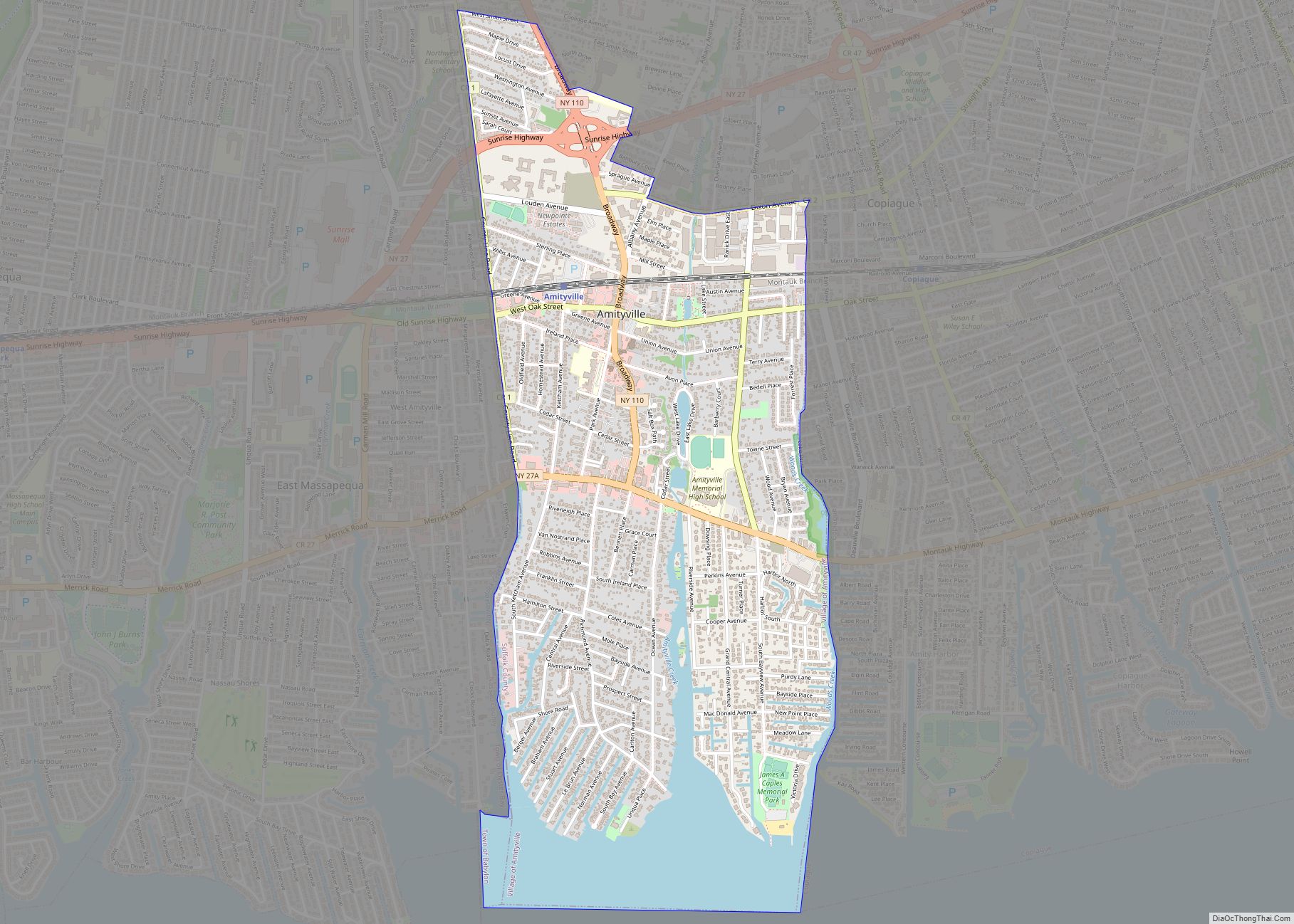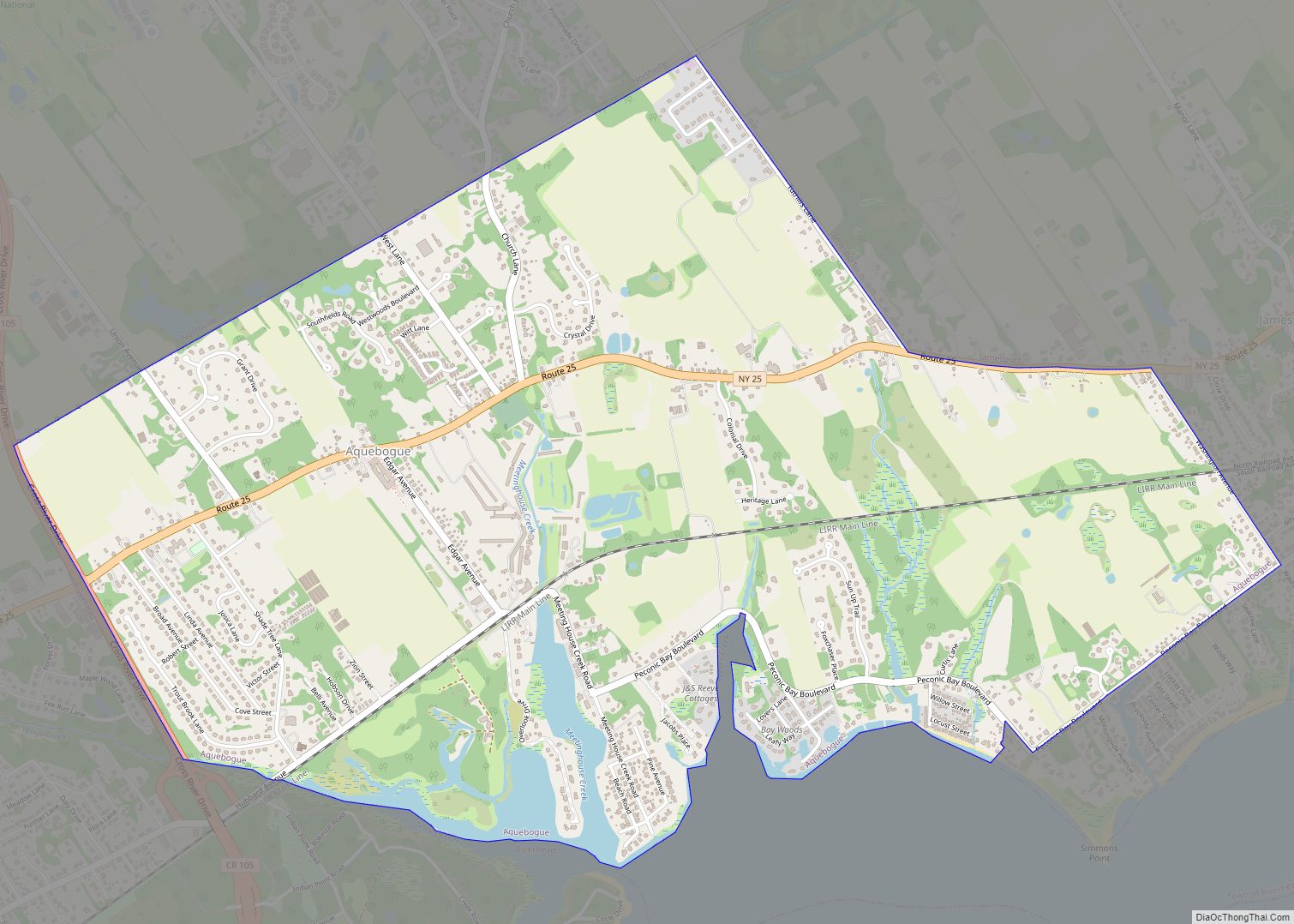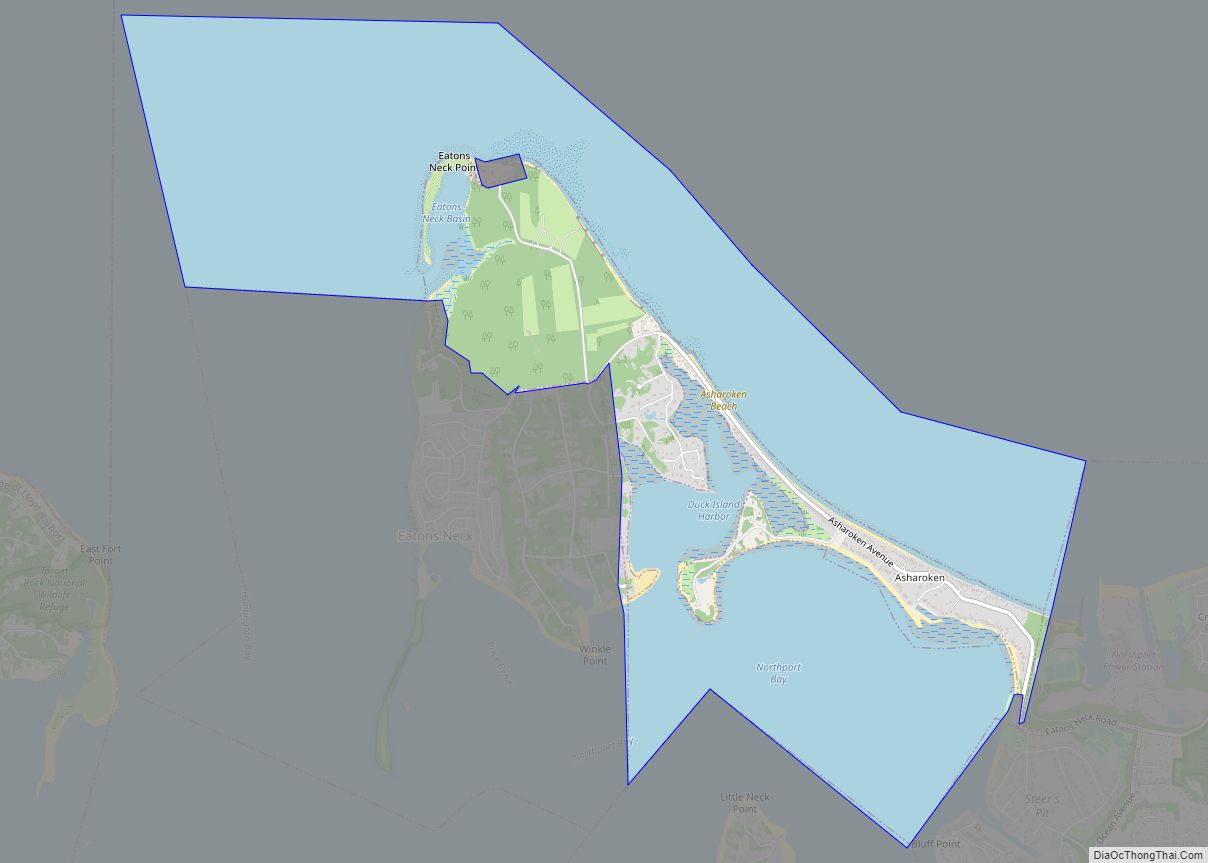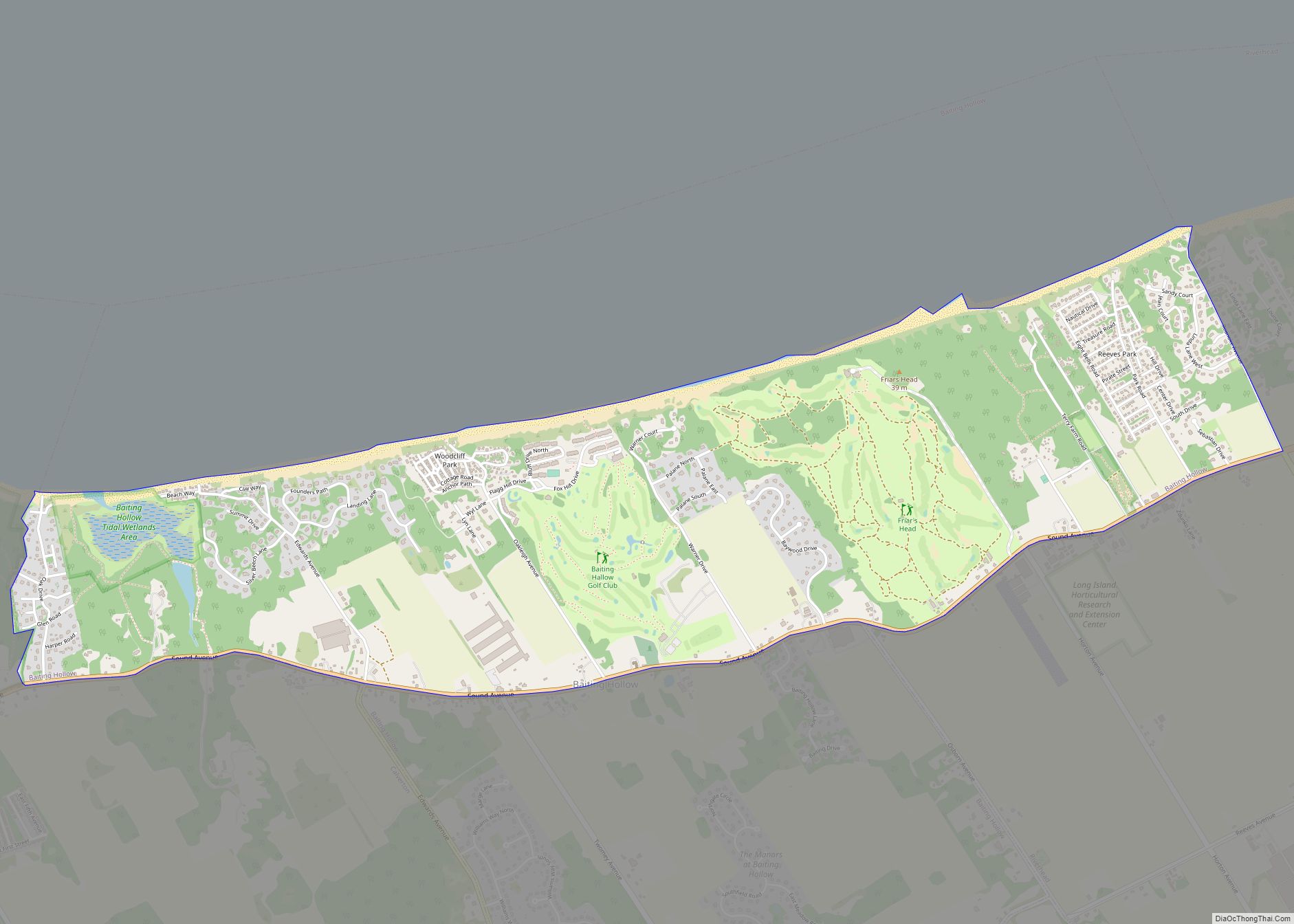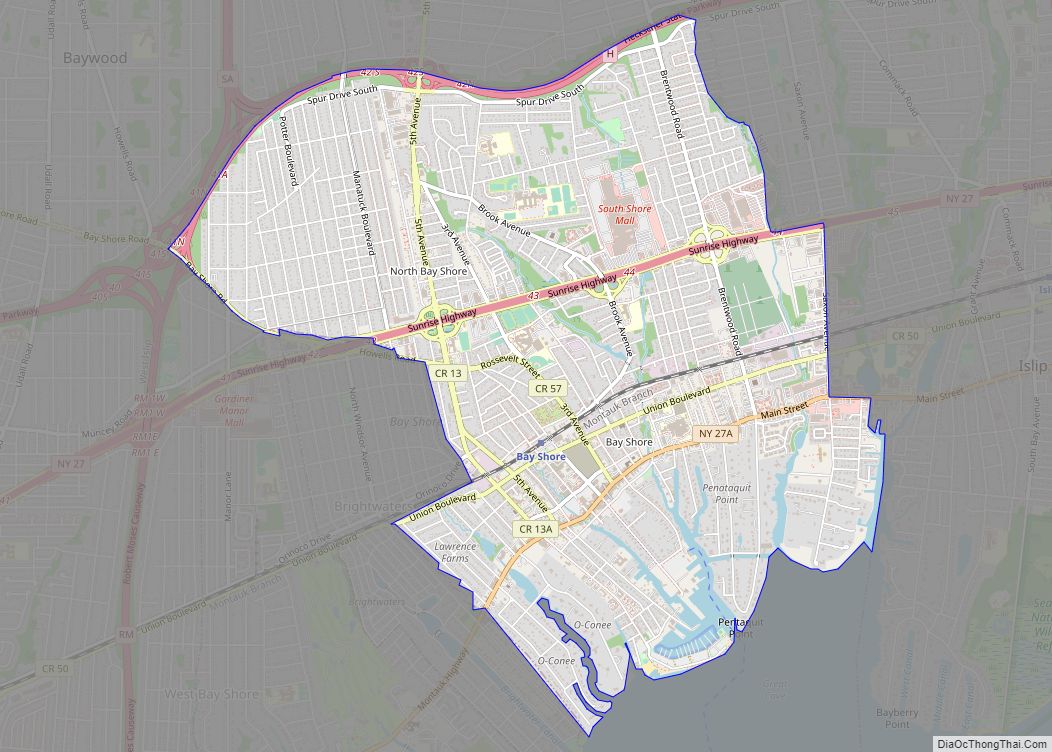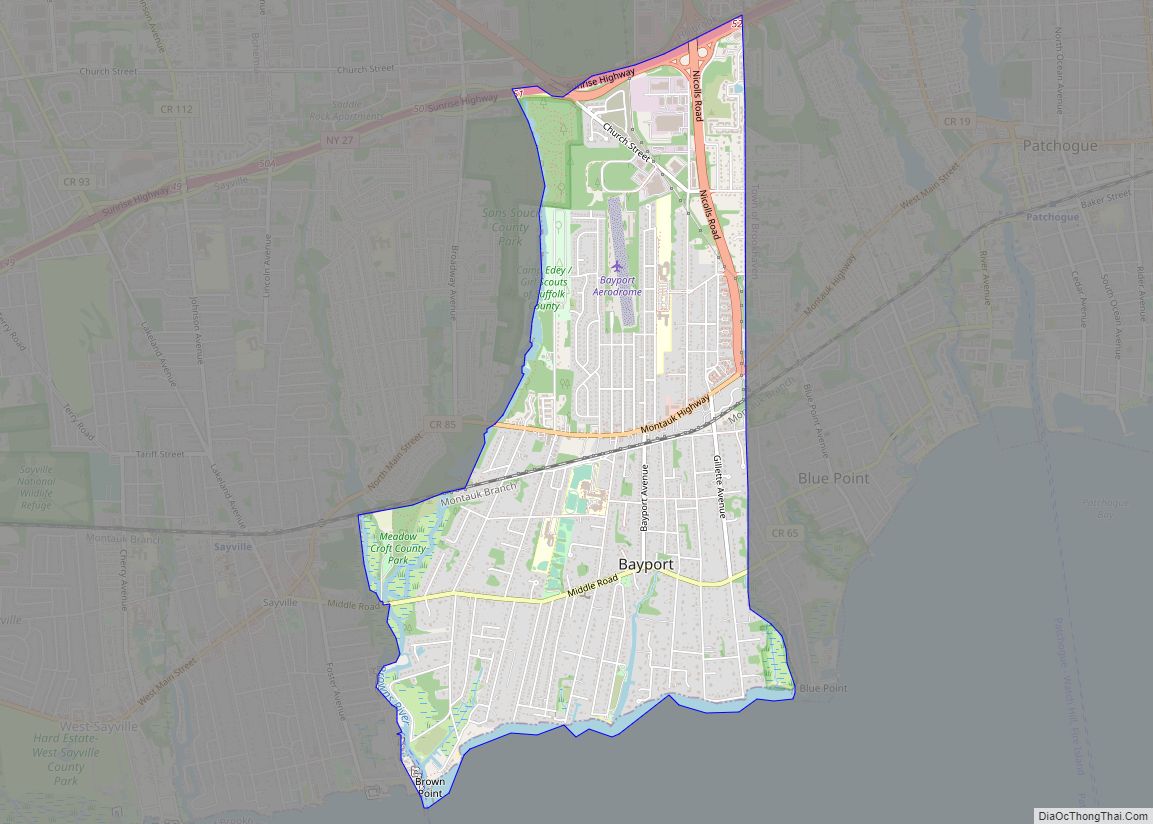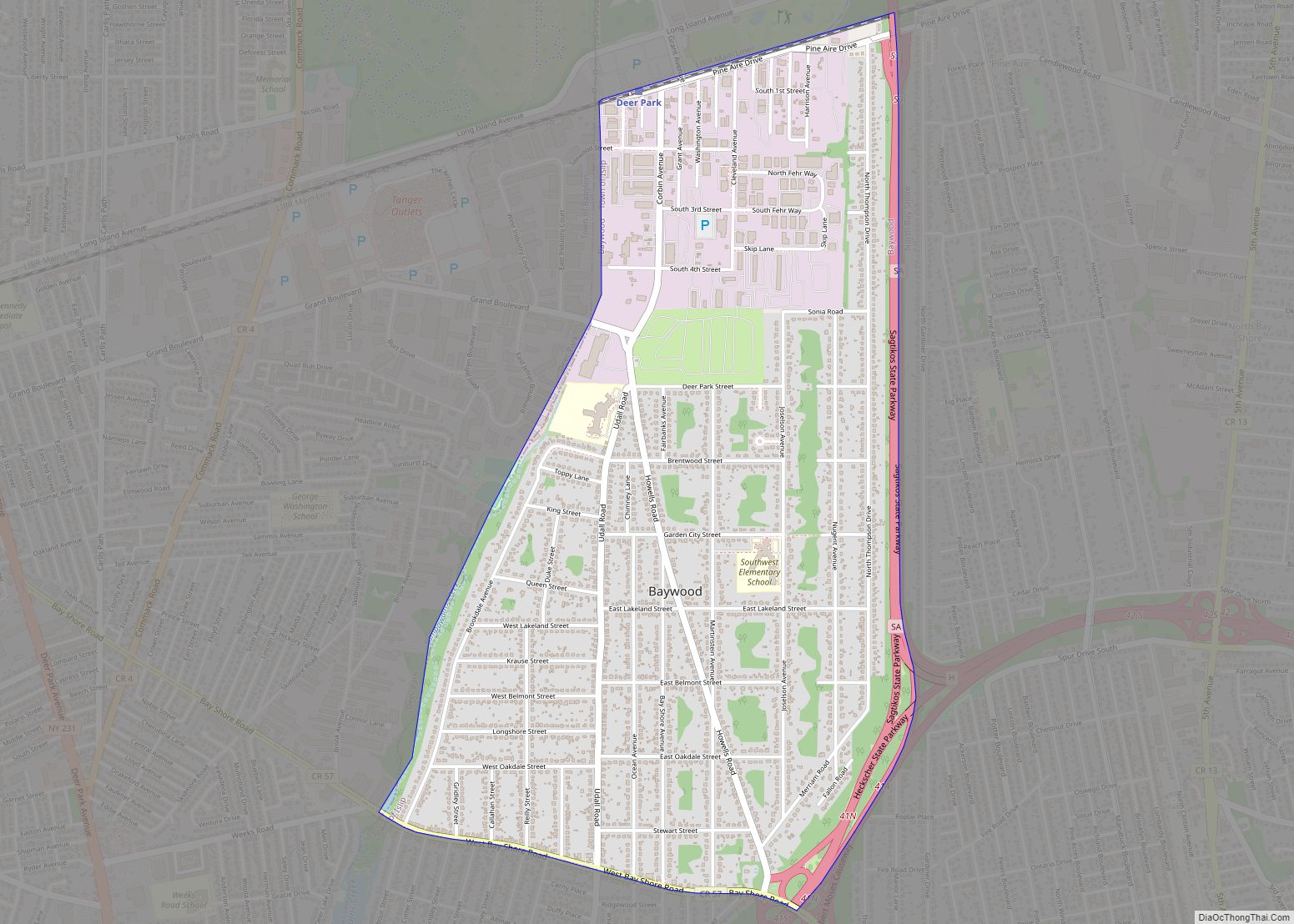Sag Harbor is an incorporated village in Suffolk County, New York, United States, in the towns of Southampton and East Hampton on eastern Long Island. The village developed as a working port on Gardiner’s Bay. The population was 2,772 at the 2020 census.
The entire business district is listed as the historic Sag Harbor Village District on the National Register of Historic Places. A major whaling and shipping port in the 19th century, by the end of this period and in the 20th century, it became a destination for wealthy people who summered there.
Sag Harbor is about three-fifths in Southampton and two-fifths in East Hampton. Its landmarks include structures associated with whaling and its early days when it was designated as the first port of entry to the new United States. It had the first United States custom house erected on Long Island.
| Name: | Sag Harbor village |
|---|---|
| LSAD Code: | 47 |
| LSAD Description: | village (suffix) |
| State: | New York |
| County: | Suffolk County |
| Incorporated: | March 26, 1846 |
| Elevation: | 26 ft (8 m) |
| Total Area: | 1.80 sq mi (4.68 km²) |
| Land Area: | 1.79 sq mi (4.63 km²) |
| Water Area: | 0.02 sq mi (0.05 km²) |
| Total Population: | 2,772 |
| Population Density: | 1,551.20/sq mi (598.79/km²) |
| ZIP code: | 11963 |
| FIPS code: | 3664485 |
| GNISfeature ID: | 0963216 |
| Website: | sagharborny.gov |
Online Interactive Map
Click on ![]() to view map in "full screen" mode.
to view map in "full screen" mode.
Sag Harbor location map. Where is Sag Harbor village?
History
Sag Harbor was settled by English colonists sometime between 1707 and 1730. Many likely migrated from New England by water, as did other settlers on eastern Long Island. The first bill of lading to use the name “Sag Harbor” was recorded in 1730.
While some accounts say the village was named for the neighboring settlement of Sagaponack, which at the time was called Sagg, historians say Sagaponack and Sag Harbor both were named after a tuber cultivated by the local Pequot people and used as a staple crop. In their Algonquian language, they called the vegetable sagabon. It was one of the first crops colonists sent to England. The tuber-producing vine is now known as the Apios americana.
During the American Revolutionary War, New York Patriots fled from the advancing British and Loyalist forces and departed from Sag Harbor by boat and ship for Connecticut. In 1777 American raiders under Return Jonathan Meigs attacked a British garrison at a fort on a hill in Sag Harbor, killing six and capturing 90 British soldiers in what was called Meigs Raid. The fort was dismantled after the war. The site has become known as the Old Burying Ground and is associated with the Old Whaler’s Church.
Sag Harbor supplanted Northwest, another port about 5 miles (8 km) east of the village in the Town of East Hampton. International ships and the whaling industry had started in Northwest, but its port was too shallow for the developing traffic. The most valuable whale product was whale oil, which was used widely in lamps.
Sag Harbor became a major port for the whaling industry, and the processing and sale of this oil. By 1789 Sag Harbor had “had more tons of square-rigged vessels engaged in commerce than even New York City.” It had become an international port.
After the Second Session of Congress on July 31, 1789, Sag Harbor was declared as the first official port of entry to the United States. Its streets were filled with sailors, artisans, merchants, representatives of the many different cultures working in shipping and whaling. As the first stop for ships entering United States territory, Sag Harbor received ships bound for New York City. The United States government placed a customs house in the town, the first on Long Island, to collect duties and other fees.
During the War of 1812, a British squadron dominated and controlled most of Long Island Sound. Several open British boats entered the harbor at night, without any advance planning; the young commanding midshipman, C. Claxton R.N., was curious about the village. He later wrote about his youthful misadventures years when serving as editor of The Naval Monitor. They landed at the wharf, but an alarm gun was fired before they could set fire to the coasting vessel docked there and they quickly retreated. Claxton and his men made it safely back to HMS Ramillies, anchored off Gardiners Island.
The village of Sag Harbor is in the Towns of both Southampton and East Hampton. The dividing line is Division Street, known as Town Line Road just south of the village. Most of the defining 19th-century landmarks of the village — including its Main Street, Old Whaler’s Church, John Jermain Memorial Library, Whaling Museum, Custom House, the Old Burying Ground, Oakland Cemetery, Mashashimuet Park, and Otter Pond are in Southampton. However, almost all of the Bay Street marina complex, including Sag Harbor Yacht Club and Breakwater Yacht Club, at the foot of Main Street, is in East Hampton. Also there are the village’s high school, the Sag Harbor State Golf Course, and the historic freedmen’s community of Eastville, first developed in the early 1800s.
The whaling industry in Sag Harbor peaked in the 1840s, but its importance had been widely recognized. Writer Herman Melville mentioned Sag Harbor in his novel Moby Dick.
Historic buildings from this period include the Old Whaler’s Church, a Presbyterian church that sported a 185-foot-high (56 m) steeple. When the church opened in 1843, the steeple made it the tallest structure on Long Island. The steeple collapsed during the Great Hurricane of 1938. While the church has received major restoration, the steeple has not been rebuilt.
Whaling merchant Benjamin Huntting II commissioned a grand, 1845 Greek Revival home designed by American architect Minard Lafever. It is now owned and used by The Sag Harbor Whaling & Historical Museum, which is open to the public. The Masonic Lodge (Wamponamon 437), which occupies the second floor, celebrated its 150th anniversary in 2008.
Lafever is also credited with designing the Old Whaler’s Church and the Masonic Temple. The broken mast monument in Oakland Cemetery is the most visible of several memorials to men who died at sea.
The whaling business collapsed after 1847, as other methods were discovered to create kerosene and other fuels; the first was coal oil. The discovery of petroleum in Titusville, Pennsylvania, in 1859 sealed the end.
Many of the ships based in Sag Harbor carried erstwhile miners around South America to San Francisco during the California Gold Rush, where the vessels were abandoned. The last whaling ship — the Myra, captained by Henry W. Babcock — sailed from Sag Harbor in 1871.
Mercator Cooper sailed as crew out of Sag Harbor on November 9, 1843, on the Manhattan. He was on a voyage to Japan, and became one of the first Americans to visit Tokyo Bay. Pyrrhus Concer, an African-American sailor, also served on the ship; he was the first black man known to be seen by the Japanese. Cooper continued with major sailing expeditions. On January 26, 1853, he left Sag Harbor on the Levant, bound to the South Pole. He was the first person to set foot on East Antarctica.
In 1870 the Long Island Rail Road built a Sag Harbor Branch to the village. It began to carry visitors and summer residents attracted to the harbor and the light of eastern Long Island. Given changes in passenger traffic and railroad operations, the former station is now operated as a gardening store.
New residents continued to settle in the village. In 1896, the oldest synagogue on Long Island, Temple Adas Israel, was founded in Sag Harbor.
During World War I, the E. W. Bliss Company tested torpedoes in the harbor a half mile north of the village. (They did not have live warheads.) As part of the process, Long Wharf in Sag Harbor was reinforced with concrete. Rail spurs were built along the wharf to carry torpedoes to be loaded onto ships for testing. At the time, the wharf was owned by the Long Island Rail Road, which handled the transport of torpedoes to Sag Harbor. Among those observing the tests was Thomas Alva Edison. Divers occasionally still find torpedoes from this era on the bay floor. Most of the wharf’s buildings, including one now operated as the Bay Street Theatre, were built during this period.
Sag Harbor was the residence of writer John Steinbeck from 1955 until his death in 1968. Steinbeck did some of his writings in a little house on the edge of his property, including The Winter of Our Discontent, which was set in a fictionalized version of Sag Harbor and whose main character works at a grocery store modelled after Schiavoni’s. His view from the writing house overlooked the Upper Sag Harbor Cove. As recounted in his memoir, Travels with Charley, Steinbeck started an 11-week trip with his dog, Charley, from Sag Harbor across the United States.
The Sag Harbor-North Haven Bridge was renamed in November 2008 as The LCpl Jordan Haerter Veterans’ Memorial Bridge. It is believed to be the site of the 1995 suicide of Ray Johnson, a Pop artist. Spalding Gray, a writer and performer, attempted suicide at the bridge in September 2002 and October 2003.
Sag Harbor is the birthplace of the noted American poet George Sterling.
Writer William Demby lived in Sag Harbor during his last years, until his death on May 24, 2013.
African-American history
The U.S. Coast Survey map from the mid 1830s shows the square symbols for houses in the Eastville area. By 1840, the St. David A.M.E. Zion congregation built a church on Eastville Avenue.
Poet and educator Olivia Ward Bush-Banks (1869-1944) was born in Sag Harbour on February 27, 1869 to parents of African and Montauk descent. Noted Author Colson Whitehead wrote the book Sag Harbor about his childhood in the area.
After the Second World War, African Americans started to settle in what became the neighborhoods of Sag Harbor Hills, Ninevah, Azurest, Eastville and Chatfield’s Hill. Mrs. Hunter J. Terry (1887 – 1968) had been a regular summer visitor here, at a coastal woodland acreage she called Azurest. She urged the owners, the Gales of Huntington, L.I., to develop the land as a peaceful resort for African Americans. Lots were cheap at the time, although loans were not available. Thus lots and houses are small. The streets Terry Drive, Richards Drive, and Meredith Avenue were named for members of her family. The roads Walker and Milton were named for African-American whalers. Cuffee Drive was named for Paul Cuffee, a prominent African-American whaler. The first homeowners and two more generations had lived here near the beach by the time Mrs. Terry died in the late 1960s.[1] Later a few African-American celebrities and prominent New York businessmen made their summer homes there.
As of the 2010s, there is pressure from investors who, consolidating lots and planning to build larger houses than is customary, pose a threat to the character of the neighborhoods. In 2016, a collective group was formed to study these impacts on the Sag Harbor Hills, Azurest, and Ninevah Subdivisions, known by the acronym SANS. They have begun a survey of the historic resources of this area, believing they may gain listing as a historic district on the State and National Register of Historic Places, through which they could establish protection for the district. On July 10, 2019 (NP ref#100004217) was listed as the Sag Harbor Hills, Azurest, and Ninevah Beach Subdivisions Historic District.
Sag Harbor Road Map
Sag Harbor city Satellite Map
Geography
According to the United States Census Bureau, the village has an area of 2.3 square miles (6.0 km), of which 1.8 square miles (4.7 km) is land and 0.54 square miles (1.4 km), or 22.44%, is water.
In the village of Sag Harbor, fresh drinking water was obtained from digging wells to support the town’s population. “The original source of water supply was secured from four dug wells in the southern part of the village of Sag Harbor”. As Sag Harbor’s population has increased, the village has had to start bringing in fresh water from pipe lines.
As in many areas, the village practice of running sewage and storm water into the bays of Sag Harbor had to change. Sewage from the village of Sag Harbor is processed by the Department of Public Works, Wastewater Treatment Plant. It uses “chlorine to kill bacteria” before [sewage] enters the bay. By 2014, the village was using an ultra-violet system to kill the bacteria.
Topography
The majority of Sag Harbor lies on a flat, sandy coastal plain which makes up much of southern Long Island and extends along the southern coast of the island. It is the remains of a glacial moraine. Small hills rise up from the shore at about 0.3 miles (0.48 km) inland. Knolls and hills are dominated mostly by Red and Scarlet oak trees, which are interspersed with pitch and white pines. On many of the protected bay shores, wetlands and dune ecosystems dominate the land.
See also
Map of New York State and its subdivision:- Albany
- Allegany
- Bronx
- Broome
- Cattaraugus
- Cayuga
- Chautauqua
- Chemung
- Chenango
- Clinton
- Columbia
- Cortland
- Delaware
- Dutchess
- Erie
- Essex
- Franklin
- Fulton
- Genesee
- Greene
- Hamilton
- Herkimer
- Jefferson
- Kings
- Lake Ontario
- Lewis
- Livingston
- Madison
- Monroe
- Montgomery
- Nassau
- New York
- Niagara
- Oneida
- Onondaga
- Ontario
- Orange
- Orleans
- Oswego
- Otsego
- Putnam
- Queens
- Rensselaer
- Richmond
- Rockland
- Saint Lawrence
- Saratoga
- Schenectady
- Schoharie
- Schuyler
- Seneca
- Steuben
- Suffolk
- Sullivan
- Tioga
- Tompkins
- Ulster
- Warren
- Washington
- Wayne
- Westchester
- Wyoming
- Yates
- Alabama
- Alaska
- Arizona
- Arkansas
- California
- Colorado
- Connecticut
- Delaware
- District of Columbia
- Florida
- Georgia
- Hawaii
- Idaho
- Illinois
- Indiana
- Iowa
- Kansas
- Kentucky
- Louisiana
- Maine
- Maryland
- Massachusetts
- Michigan
- Minnesota
- Mississippi
- Missouri
- Montana
- Nebraska
- Nevada
- New Hampshire
- New Jersey
- New Mexico
- New York
- North Carolina
- North Dakota
- Ohio
- Oklahoma
- Oregon
- Pennsylvania
- Rhode Island
- South Carolina
- South Dakota
- Tennessee
- Texas
- Utah
- Vermont
- Virginia
- Washington
- West Virginia
- Wisconsin
- Wyoming
